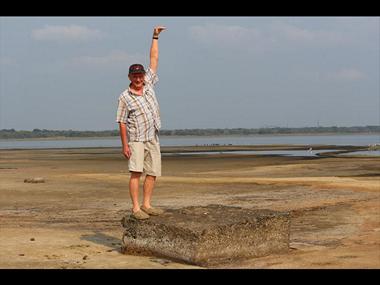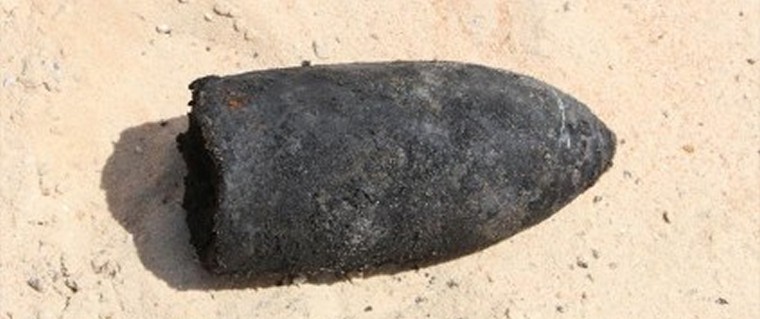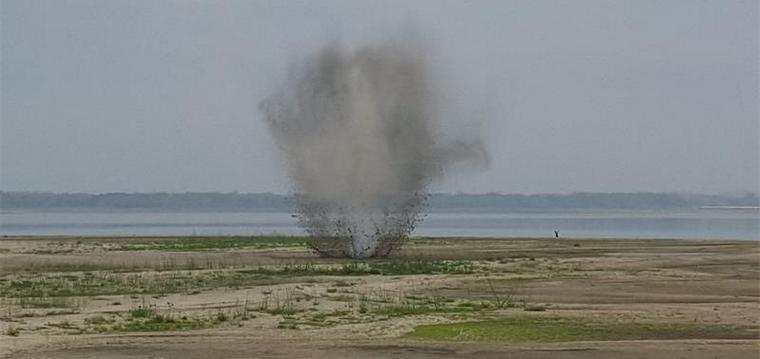The Fatal Catalina Flying Boat Crash in Lake Mzingazi-1945
By Dr. JC van der Walt
"The sad thing about the Catalina crash at Mzingazi was that I wanted to convey my condolences to the wives of Bill Lake and Nick Honey, but never did," said Wing Commander Gar Nash to me. "Their bodies had already been removed when I arrived at Richards Bay," he said, indicating that he felt guilty that he failed to console the wives of his friends.
Nash flew his Catalina flying boat from Scotland to South Africa. He landed at Lake St Lucia on March 4, 1944. It was Flt. Lt. Bill Lake who boarded Gar Nash's Catalina at St Lucia to demonstrate to him how to land safely at the Congella Flying bomber base in Durban harbour.
"A narrow channel and crooked as a dog's hind-leg," chuckles the veteran pilot. Experienced pilots based in South Africa had to guide new RAF pilots into Congella. Getting airborne in a huge Catalina was a nightmare for the crew. Sitting in the cabin with their backs to the bulkhead and their knees drawn up, waiting. The fully laden Catalina with its six depth charges had to strain for more than two minutes for the craft to plunge ahead in darkness. The flying boat struggled to get free from the water and often it almost stalled, before climbing to safe altitude.
"It is difficult to say whether taking off or landing was more dangerous. I really do not know - it is difficult to say. At Lake Mzingazi the real danger was when the lake was dead calm - it looked like a mirror - you could not see and you could easily plunge straight into the water," says Nash, pondering over the death of his two friends.
Late in the afternoon of 30 January 1945 Flt Lt WW Lake was instructed to fly the first circuits in Catalina JX367/G2. This was successfully done. The next three circuits were flown in the dark. There was no moon and no horizon. At 20h00 Lake signaled that they were coming in for a final touch down before mooring up.
The flare path was laid out from South to North with three flares spaced at 1280 metres. An extremity light was positioned 640 metres before the first flare and the second extremity light was positioned 640 metres beyond the third flare. Both extremity lights were covered with a thin layer of red dope to distinguish them. This gave a maximum safe landing distance on the water of 4800 metres. The pilot ten turned crosswind at 900 feet and turned into the wind at 700 feet. The approach seemed normal until 300 feet when the rate of decent increased. The pilot flattened out at 200 feet but the rate of decent was still high.
The Catalina hit the water near the first flare and bounced high. Power was increased to 40 inches at 2300 rpm as the pilot attempted to smooth the bounce. The aircraft sagged and touched the water lightly between the first and second flare. The pilot eased it off the water and raised the nose to climb away. The plane was too low.

The Catalina flying boat crashed at Richards Bay on 30 January 1945 killing Flight Lieutenant WW Lake and Captain HN Honey. There were three survivors
The Catalina hit the trees again and again. Flight Engineer JE Burke felt the main planes twist and felt the right side of his compartment crushing. He dropped from his seat and into the gully. At the same time the fuel tanks burst and he was saturated in petrol that blinded him. He felt his way aft to the blister and dropped clean. Although there was 3500 litres of petrol aboard there was no fire.
The section forward of the pylon was telescoped into the ground as the rest of the aircraft twisted around it and came to rest upright facing the way from which it had come.
Ft Lt. Lake who had been at the controls and Capt. NH Honey were killed on impact and had been thrown clear of the crushed cockpit section.
Major Des Eden crossed the lake in a bomb scow where the Catalina had crossed the shore. The rest of the rescue party that included the RAF Medical Officer, Flt. Lt. WG Alexander, managed to get ashore to make their way to the wreckage that was some 300 metres into dense bush. The approach to the heavily weeded shoreline at the point where the party landed was through crocodile infested mangroves. The rescue party released and extricated the unconscious navigator CM Baker still strapped into his seat.
The three injured men including Wireless Operator RJ Curtin, were taken to the camp (where the Richards Bay Country Club is located today) for medical treatment. The two bodies were brought back the following day by a lorry.

Capt. JJ Daniels headed the Board of enquiry into the crash the Board concluded, "That the most probable cause of the accident is that the artificial horizon had toppled as a result of the heavy contact with the water. This resulted in a wing drop and the fatal crash."
"Yes I knew Williamson well," says Gar Nash when he refers to the Commander of the Mzingazi base - Flt Lt Ron Williamson, Distinguished Flying Cross (DFC).
"He was an Australian - a suave chap, very handsome, liked to dress up, and often made a beard for himself using shaving cream and hair, he never married, a bit queer, you know. He was very competent. I visited him in Australia during 1997 - unfortunately he was bedridden. He has passed away since then," says Nash.
Williamson's photograph reflects the image of a movie idol of World War Two - debonair, dashing and daring.
 
Catalina flying boat mooring chains and Catalina flying boat mooring blocks
Lake Mzingazi flying base was opened after Lake St Lucia became too shallow for flying boat operations during September 1944. The Mzingazi anchorage consisted of a jetty, a signals tower, marine craft, flying boat tenders and flare path tenders. The Catalina based in Durban had to bomb up at Richards Bay because their depth charges represented a danger to shipping in Durban harbour.
Ronnie Williamson DFC, commander of the Catalina air base at Richards Bay, flew to Richards Bay airport (East of Hotel Richards) in an Anson aircraft on September3, 1944. Flt Lt Lake took aerial photographs of the lake the next day and the first party who landed their Catalina on the lake took the necessary precautions against the dangerous crocodiles and hippo's: a Sten machine gun as well as a 0,303 Lee-Enfield rifle and a revolver.
The road party left from Congella to Richards Bay on November 4, 1944. On November 22, 1944, Gar Nash was promoted to Commander of Squadron 262 and on November 26, 1944, he carried out night take-off and landings in Lake Mzingazi.
The Richards Bay flying bomber base was officially opened on December 14, 1944.The first operational flight took place on December 30, 1944. The base consisted of tents, several permanent buildings, a double-story operations room, and an open-air tea- room cum bar called "The mamba's nest".

Catalina bomb in Lake Mzingazi

Bomb detonated in Lake Mzingazi
The Mzingazi base was a "happy base." The only official complaint was that:
"14 quarts of beer per man per month was inadequate in the extreme heat of Zululand."
(Source: van der Walt, JC, "ZULULAND true STORIES 1780 to 1978", fifth edition, 2011)
|
       |























